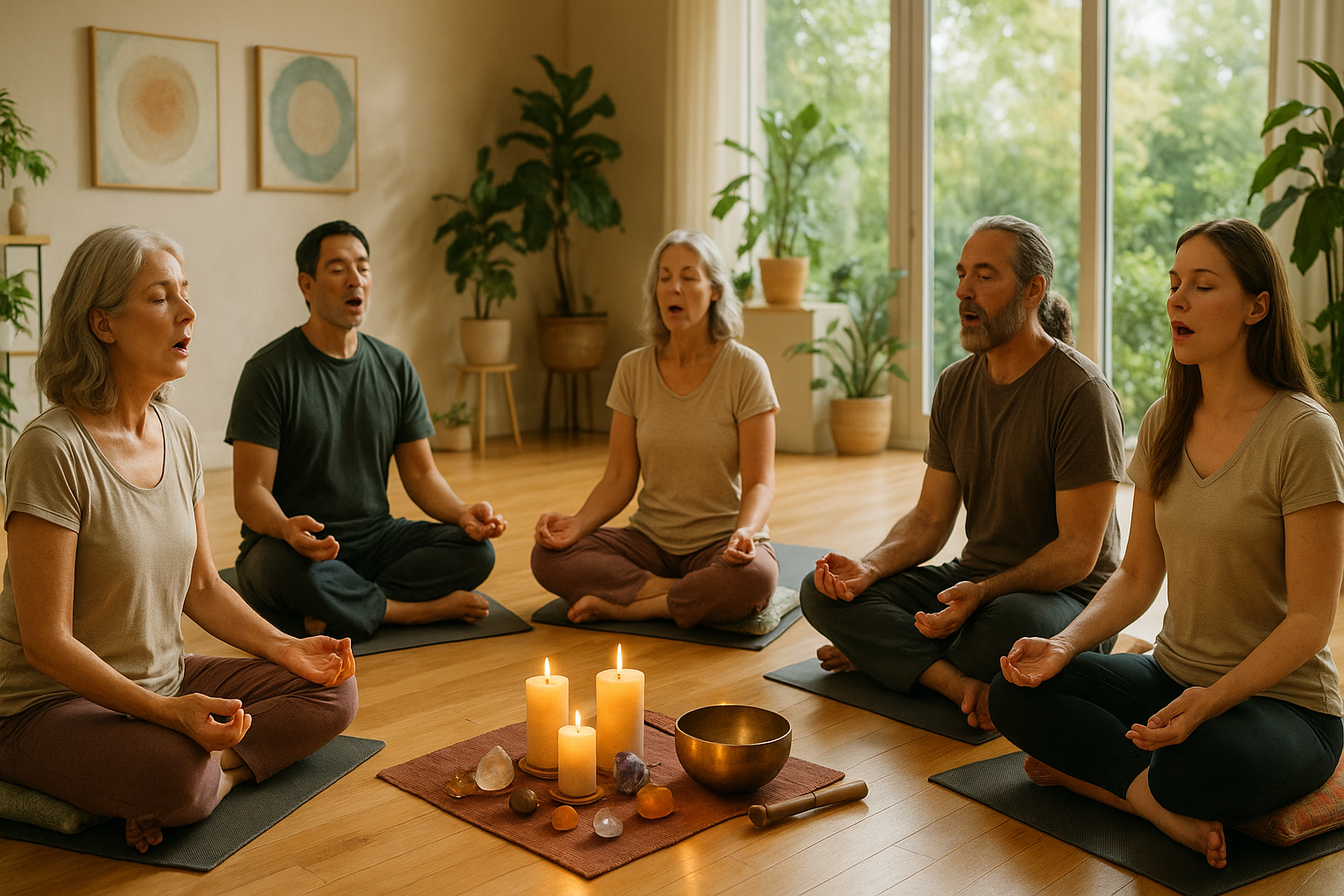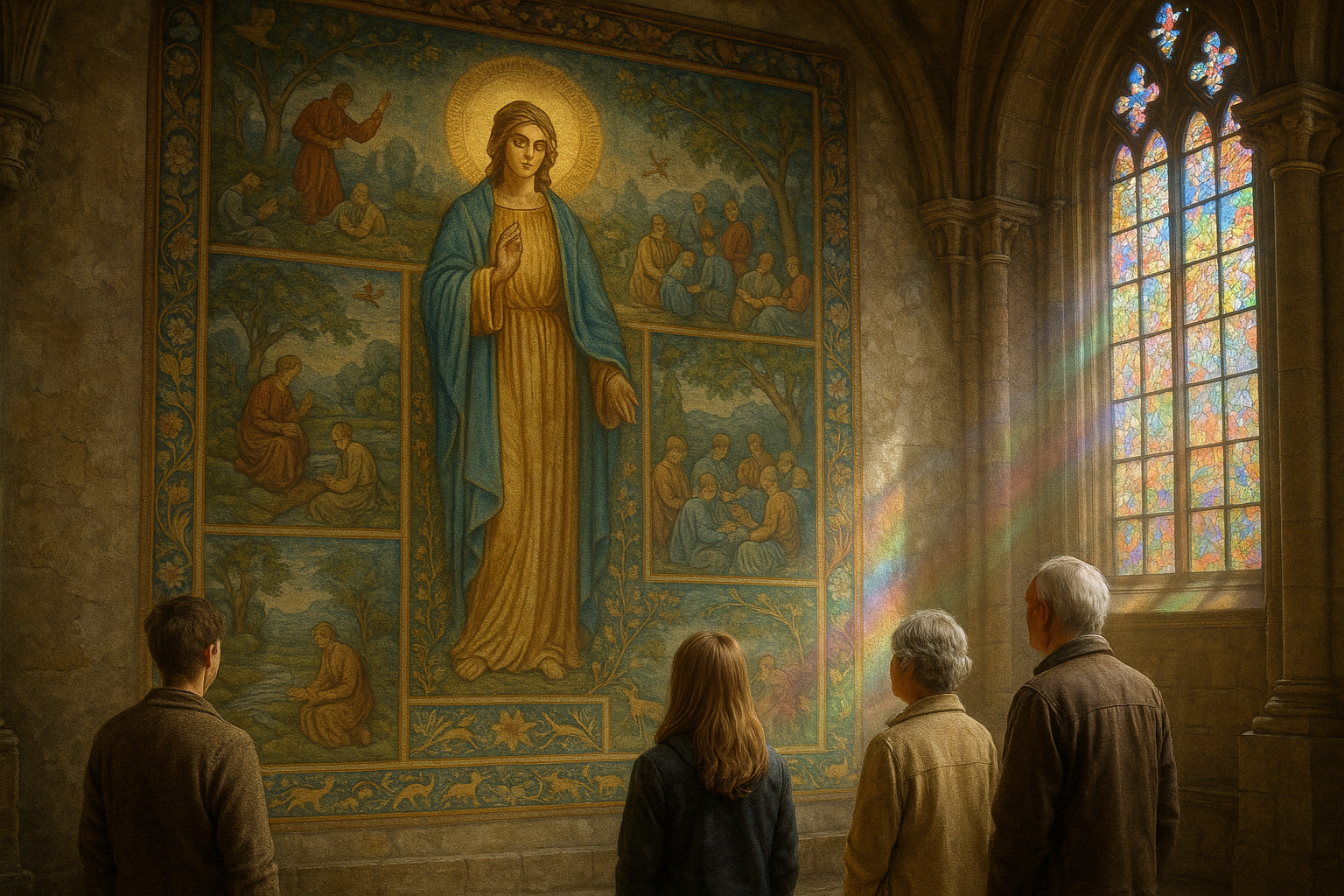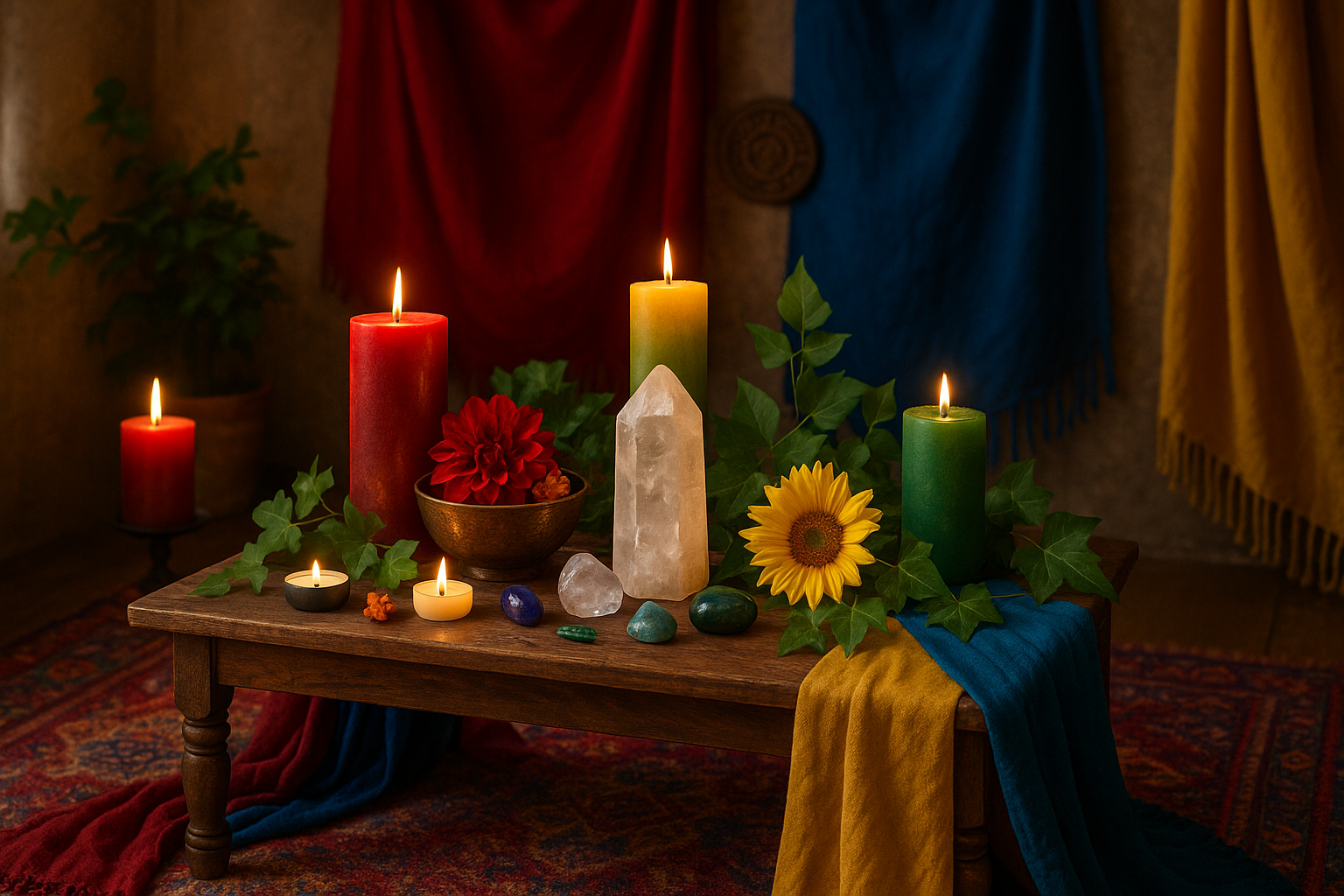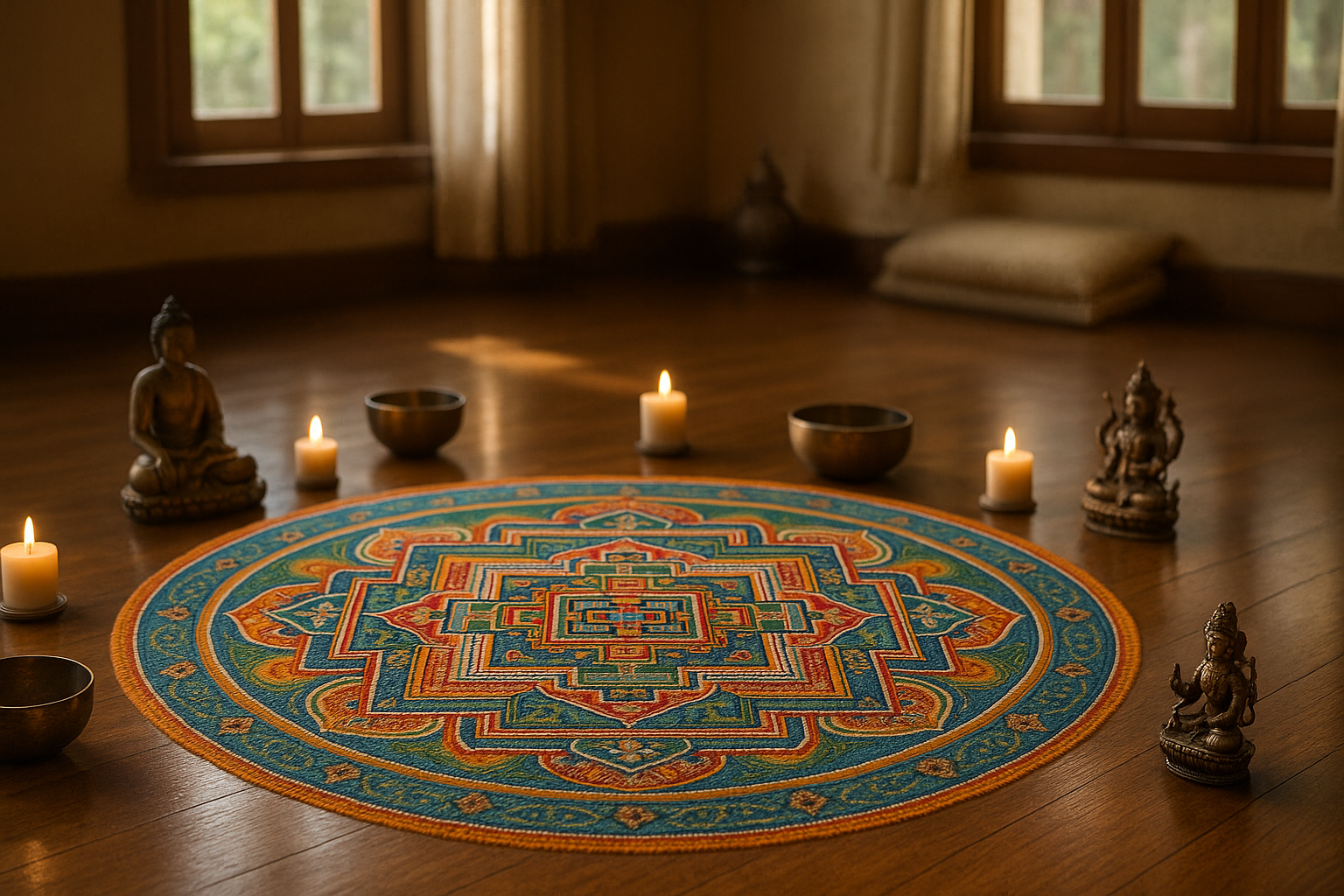In a world awash with color, we often underestimate the profound impact hues can have on our emotions, perceptions, and even our daily decisions. Imagine waking up on a gloomy Monday morning. You instinctively reach for that vibrant red sweater or perhaps a calming blue shirt. Unbeknownst to many, these choices are not merely based on aesthetic preferences or subconscious habits. They are deeply rooted in the psychology of color and its ability to sway our mood and influence our style. Welcome to a captivating exploration of how the colors you wear can speak volumes about your inner world and even transform it. 🎨
Color is not just a visual phenomenon; it’s a powerful language of its own. From the tranquil whispers of pastel tones to the bold proclamations of bright, saturated shades, each color carries with it a unique set of emotional triggers. This article delves into the intricate dance between color and emotion, unraveling the science and psychology behind why certain colors make us feel a certain way. We will explore the cultural and historical contexts that shape these perceptions, providing a comprehensive understanding of how color influences our lives. Whether you’re dressing for success, seeking to calm your mind, or aiming to energize your spirit, the colors you choose can serve as a silent partner in your daily endeavors.
The Psychological Impact of Colors
Colors are more than just visual stimuli; they have the profound ability to influence human emotions and behaviors. This influence is largely due to the psychological associations we develop with colors throughout our lives. For instance, the color blue is often associated with calmness and serenity, while red can evoke feelings of excitement or urgency. This psychological impact of colors can be traced back to both cultural influences and evolutionary factors. As we delve into the topic of how garment colors can affect our mood and style, it is crucial to understand these psychological underpinnings.
One of the primary reasons colors have such a significant psychological impact is due to cultural associations. Different cultures attribute different meanings to colors. For instance, while white is often associated with purity and innocence in Western cultures, it is associated with mourning in some Eastern cultures. These cultural connotations can influence how a person perceives a color and, consequently, their emotional response to it. This is particularly important in fashion, where the choice of garment color can convey a message or create an impression even before a word is spoken.
In addition to cultural factors, evolutionary psychology also plays a role in how we perceive colors. Certain colors have been linked to survival instincts. For example, the color red can signal danger or alertness, which may explain why it is often used in stop signs and warning labels. In the realm of fashion, understanding these instincts can be beneficial for choosing garment colors that align with the desired emotional impact or impression. Consider wearing a red outfit when you want to capture attention or convey confidence in a social setting.
The Science Behind Color Perception
The science of how we perceive colors involves a complex interplay between our eyes and brain. When light hits an object, certain wavelengths are absorbed while others are reflected. The reflected wavelengths determine the color we perceive. This process begins when light enters the eye through the cornea, passing through the lens and reaching the retina. The retina contains photoreceptors known as rods and cones that are sensitive to light and color, respectively. The cones are responsible for color vision and are classified into three types based on their sensitivity to different wavelengths of light: long (red), medium (green), and short (blue).
Once the cones detect the light, the information is converted into electrical signals and transmitted to the brain via the optic nerve. The brain then processes these signals in the visual cortex, allowing us to perceive and interpret the color. This entire process happens almost instantaneously, enabling us to respond to visual stimuli quickly. Understanding this process highlights how garment colors can instantly affect our mood, as the brain associates these colors with particular emotions or memories.
Color perception is not only about the physiological process but also the subjective experience. Two people may perceive the same color differently due to factors such as lighting conditions, surrounding colors, and individual differences in color vision. This subjectivity adds another layer of complexity to how colors affect our emotions and style choices. For example, a soft pastel color might evoke tranquility in one person but might seem dull to another, impacting their mood and style preferences differently.
How Garment Colors Influence Emotions
Garment colors have a powerful impact on emotions, and understanding this influence can help individuals make intentional choices in their wardrobe to enhance their mood and personal style. Colors can evoke a wide range of emotions, from excitement and happiness to calmness and melancholy. This emotional response is often subconscious and can be harnessed to create desired feelings or impressions.
For example, warm colors such as red, orange, and yellow are often associated with warmth and energy. Red, in particular, is a stimulating color that can evoke feelings of passion, urgency, or excitement. It is no surprise that red is a popular color for evening wear, as it can create a sense of allure and confidence. Conversely, cool colors like blue, green, and purple are often associated with calmness and relaxation. Blue is known for its calming effect, making it a popular choice for casual or professional attire where a serene presence is desired.
Neutral colors such as black, white, and gray can also influence emotions, albeit in more subtle ways. Black is often associated with sophistication and elegance, making it a staple in formal and professional settings. However, it can also evoke feelings of mystery or sadness. White is often associated with purity and cleanliness, which can create a sense of freshness or simplicity in an outfit. Gray, being a blend of black and white, can convey neutrality and balance, making it a versatile choice for various settings.
Using Colors to Enhance Personal Style
Understanding the emotional impact of colors can empower individuals to use them strategically to enhance their personal style. Fashion is not just about following trends; it is about self-expression and making choices that align with one’s personality and desired image. By choosing garment colors that evoke desired emotions, individuals can create a wardrobe that not only looks good but also feels good.
For instance, someone who wants to convey confidence and energy might incorporate more red or orange into their wardrobe. On the other hand, someone seeking a calm and approachable presence might opt for blues and greens. Additionally, using color strategically can help create a cohesive personal style. By selecting a color palette that complements one’s natural coloring and personal preferences, individuals can create a signature look that is uniquely their own.
It’s important to note that personal style is subjective, and there are no strict rules when it comes to choosing colors. What matters most is how a person feels in the colors they choose to wear. Confidence and comfort are key components of style, and if a particular color makes someone feel good, it is likely to enhance their overall presence and demeanor.
Comparative Analysis of Popular Garment Colors
To better understand how different garment colors can influence mood and style, let’s conduct a comparative analysis of some popular colors. This analysis will examine the psychological associations, emotional impacts, and potential style applications of each color.
| Color | Psychological Association | Emotional Impact | Style Application |
|---|---|---|---|
| Red | Passion, Urgency | Excitement, Confidence | Evening Wear, Power Dressing |
| Blue | Calmness, Trust | Relaxation, Serenity | Business Attire, Casual Wear |
| Yellow | Optimism, Energy | Happiness, Warmth | Casual Wear, Summer Outfits |
| Green | Nature, Harmony | Calmness, Freshness | Casual Wear, Eco-Friendly Fashion |
| Black | Sophistication, Mystery | Elegance, Authority | Formal Wear, Professional Attire |
| White | Purity, Simplicity | Freshness, Clarity | Summer Outfits, Minimalist Style |
As demonstrated in the table above, each color has unique psychological associations and emotional impacts that can be leveraged to achieve specific style goals. By understanding these associations, individuals can make informed decisions about their wardrobe to enhance their mood and personal style.
Exploring Color Combinations
While individual colors have their own emotional impacts, combining colors can create entirely new effects. Color combinations can be used to achieve a harmonious look, create contrast, or convey a particular theme. Understanding how to effectively combine colors can elevate personal style and make a lasting impression.
One approach to color combinations is the use of complementary colors, which are opposite each other on the color wheel. For example, pairing blue with orange or red with green can create a striking contrast that is visually appealing. This approach is often used in bold fashion statements or when a dramatic effect is desired.
Analogous color combinations involve using colors that are next to each other on the color wheel, such as blue and green or red and orange. These combinations create a more harmonious and cohesive look, as the colors naturally blend well together. This approach is ideal for creating a soothing or balanced outfit.
For those interested in learning more about color combinations and their impact on style, we recommend watching the video “Color Theory Basics: Color Harmony, the Color Wheel, and How to Use It” on the YouTube channel “SchaeferArt” (Watch Video). This video provides valuable insights into the principles of color theory and how they can be applied to fashion and design.
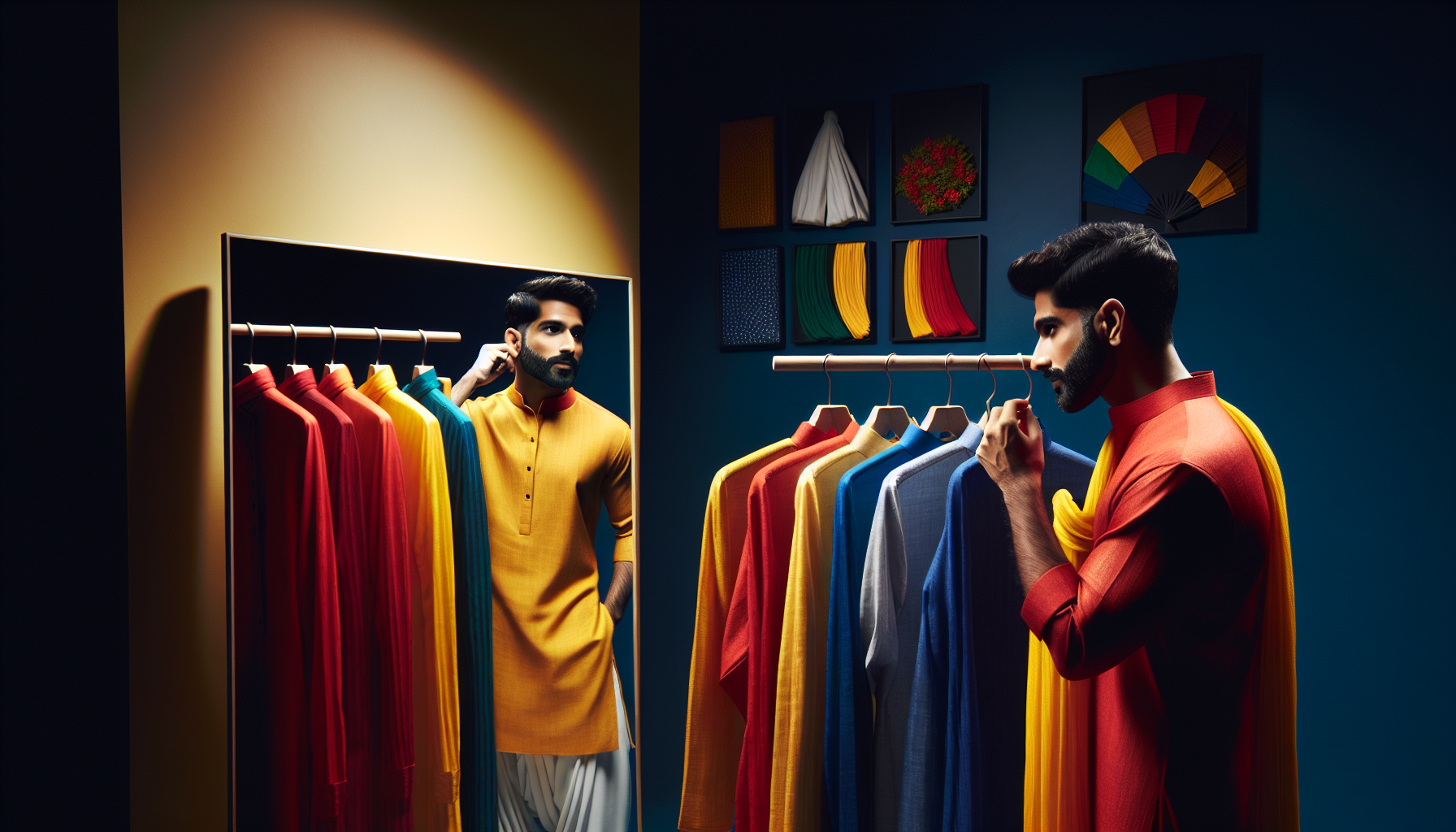
Conclusion
In conclusion, the exploration of how garment colors can influence our emotions and style is not just a fascinating topic, but also one that holds significant practical implications for our daily lives. Throughout this article, we have delved into the psychological impacts of colors, their cultural significance, and how they can be strategically used to enhance personal style and mood.
Firstly, we discussed the psychological basis of color theory, highlighting how different hues can evoke specific emotions. For instance, warm colors like red and orange are often associated with energy and passion, while cool colors such as blue and green can induce calmness and relaxation. This foundational understanding sets the stage for making intentional color choices in our wardrobes.
Moreover, we examined the cultural and social contexts in which color preferences and meanings are shaped. Different cultures assign different meanings to colors, and being aware of these variations can enrich our understanding and application of color in a globalized world. This cultural awareness is essential, not just for personal style but also for fostering inclusivity and sensitivity in our interactions.
Our discussion also covered practical tips on how to incorporate color into your wardrobe effectively. By using colors that align with personal emotions and the desired impression, individuals can harness the power of colors to boost confidence, enhance mood, and express their unique style. Whether it’s wearing a bright yellow dress to uplift your mood on a gloomy day or choosing a classic black suit for a professional setting, the colors you wear can be a powerful tool for self-expression and emotional regulation.
Importantly, the article emphasized the importance of personal experimentation with colors. Fashion is a deeply personal journey, and while color psychology provides a framework, it is crucial for individuals to explore and find what resonates with them personally. This exploration not only enhances personal style but also leads to greater self-awareness and emotional intelligence.
The importance of understanding and utilizing the emotional impact of colors extends beyond individual benefits. It has broader implications in areas such as marketing, interior design, and branding, where color choices can significantly affect consumer behavior and perceptions. By applying the insights gained from this article, professionals in these fields can enhance their strategies and outcomes.
As we conclude, we encourage you to take these insights and experiment with them in your own life. Observe how different colors make you feel and how they impact those around you. Share your experiences and insights with friends and colleagues, as these discussions can lead to a deeper understanding and appreciation of the power of color. If you found this article helpful or intriguing, consider sharing it with others who might benefit from this knowledge.
For further reading on color psychology and its applications, we recommend exploring resources such as the Pantone Color Institute, which offers comprehensive insights into color trends and their psychological impacts. Additionally, websites like Psychology Today provide articles and research on the broader implications of color in psychological contexts.
Thank you for joining us on this colorful journey of discovery. May your wardrobe choices bring vibrancy and positivity to your everyday life. 🎨👗✨
Toni Santos is a visual storyteller and sensory artisan whose work explores the ancient aesthetics of the senses—how early cultures designed their environments not just for function, but for emotional, spiritual, and sensory harmony. Through thoughtful visual interpretations, Toni revives a world where every texture, scent, color, and sound was part of a deeper design for inner balance.
Guided by a passion for the subtle intelligence of ancient spaces—from meditative gardens to sacred interiors—Toni’s creations reflect the intentional artistry once used to align body, spirit, and surroundings. Whether studying the calming patterns of Mesopotamian textiles or the acoustic geometry of forgotten sanctuaries, his work invites modern audiences to rediscover the sensory wisdom of the past.
With roots in handcrafted design and symbolic research, Toni brings together material culture, ritual aesthetics, and environmental intuition. His art does more than depict—it restores a dialogue between the senses and the soul, rooted in time-tested principles of well-being.
As the guiding force behind Vizovex, Toni shares curated visuals, reflective essays, and timeless design stories that invite others to reconnect with the aesthetic languages of ancient harmony.
His work is a tribute to:
The sensory intelligence of ancestral environments
The use of beauty as a tool for spiritual and emotional balance
The ancient belief in harmony between people, nature, and space
Whether you’re a designer, a historian, or a seeker of inner stillness, Toni welcomes you into a world where the senses are sacred, and where ancient beauty whispers through space, rhythm, and form—one texture, one echo, one breath at a time.


